In your journey towards weight loss, one crucial element that often goes overlooked is portion control. The role of portion control in weight loss cannot be emphasized enough, as it plays a pivotal role in managing your calorie intake and maintaining a healthy lifestyle. By understanding the importance of portion control and implementing practical strategies, you can take charge of your eating habits and work towards achieving your weight loss goals.
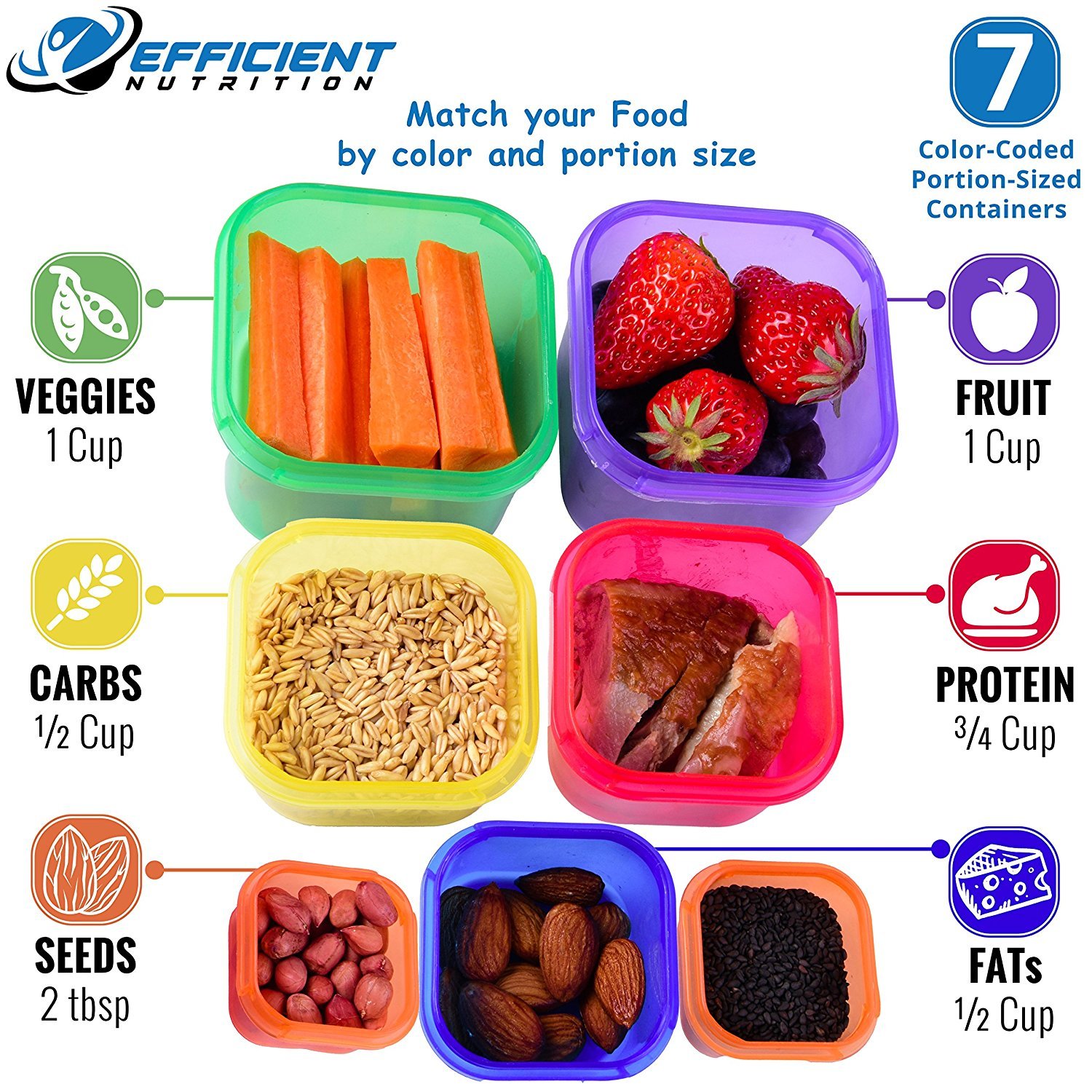
This image is property of media-cldnry.s-nbcnews.com.
The Link Between Portion Control and Weight Loss
When it comes to weight loss, one key factor that often gets overlooked is portion control. It might not sound as flashy or exciting as the latest diet fad, but it is without a doubt a fundamental aspect of maintaining a healthy weight. By understanding portion control, how it works, and the benefits it can bring, you can take a significant step towards achieving your weight loss goals.
Understanding Portion Control
Portion control refers to the practice of monitoring and regulating the amount of food you consume in each meal or snack. It involves being aware of the appropriate serving sizes for different food groups and making conscious choices about portion sizes. Essentially, it teaches you to eat mindfully and pay attention to how much you eat, rather than simply focusing on what you eat.
How Portion Control Works
Portion control works by helping you maintain a healthy caloric intake and preventing overeating. By consuming appropriate portion sizes, you can ensure that you are not consuming too many calories, which is essential for weight loss. When you consistently eat larger portions than your body needs, the excess calories are stored as fat, leading to weight gain. On the other hand, practicing portion control allows you to create a calorie deficit, which can result in weight loss over time.
Benefits of Portion Control
Implementing portion control in your diet offers numerous benefits beyond weight loss. Firstly, it helps retrain your brain and body to recognize appropriate portion sizes, making it easier to maintain a healthy weight in the long run. Additionally, portion control can help improve digestion, reduce bloating, and increase energy levels. It also allows you to enjoy a wide variety of foods, as you can include all food groups in your diet while still staying within your daily calorie goals.
Overeating and Weight Gain
Overeating is a common problem that often leads to weight gain. Our portion sizes have increased significantly over the years, and it’s easy to unknowingly consume more than our bodies actually need. The abundance of food options and large portion sizes offered in restaurants and fast-food establishments can make it challenging to practice portion control. However, by being mindful of your eating habits and learning appropriate portion sizes, you can prevent overeating and maintain a healthy weight.
Portion Control vs. Calorie Counting
Portion control and calorie counting are often seen as two sides of the same coin, but they differ in their emphasis. Portion control focuses on the size of the servings, while calorie counting involves tracking the number of calories you consume. While both methods can be effective for weight loss, portion control offers a more intuitive and sustainable approach. By focusing on portion sizes, you can develop a healthier relationship with food and become better attuned to your body’s hunger and fullness cues.
Methods of Implementing Portion Control
Now that you understand the importance of portion control in weight loss, let’s explore some effective methods for implementing it in your daily life.
Using Food Measuring Tools
One of the most accurate ways to practice portion control is by measuring your food using specific tools such as measuring cups, spoons, and kitchen scales. These tools allow you to precisely measure the amount of food you are eating, ensuring that you stay within your desired portion sizes. This method is particularly useful when it comes to grains, pasta, and other dry ingredients.
Visual Portion Control
Visual portion control involves estimating portion sizes based on visual cues rather than measuring tools. For example, a serving of protein should be roughly the size of a deck of cards, a serving of vegetables should fit in the palm of your hand, and a serving of fats such as butter or oil should be about the size of your thumb. While not as precise as using measuring tools, visual portion control can be a helpful and practical method for everyday use.
Plate Method
The plate method is a simple yet effective way to control portions and create balanced meals. It involves dividing your plate into different sections, with each section representing a different food group. For example, half of your plate should be filled with vegetables, one-fourth with lean protein, and the remaining one-fourth with whole grains or starchy vegetables. This method ensures that you are consuming appropriate portions of each food group while still enjoying a variety of flavors.
Meal Prepping
Meal prepping is a popular strategy for portion control, as it allows you to plan and prepare your meals in advance. By portioning out your meals into individual containers or compartments, you can easily control portion sizes and avoid mindless overeating. Moreover, meal prepping saves time and money, as you can cook larger batches of healthy meals and have them readily available throughout the week.
Eating Mindfully
Practicing mindful eating is a powerful tool for portion control and overall well-being. It involves paying full attention to the eating experience, savoring each bite, and being aware of your body’s hunger and fullness signals. By eating slowly and mindfully, you give your brain and stomach time to communicate, which can prevent overeating. Additionally, mindful eating enhances your enjoyment of food and promotes a healthier relationship with eating.
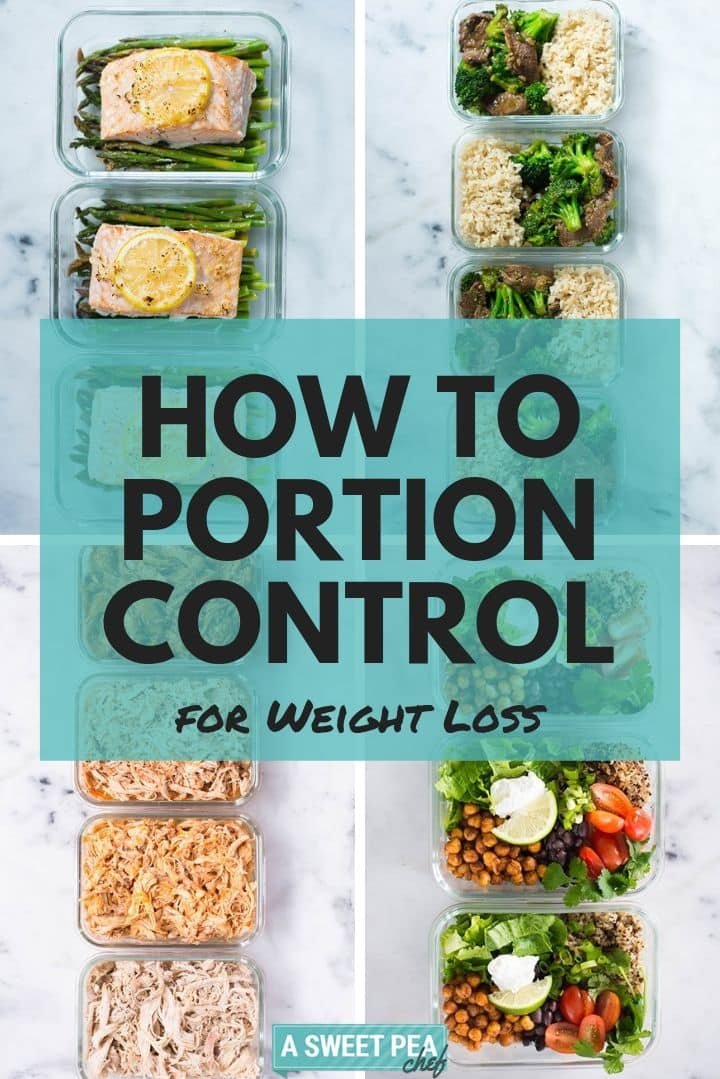
This image is property of www.asweetpeachef.com.
Portion Control and Different Food Groups
Portion control is not a one-size-fits-all approach, as different food groups have varying recommended portion sizes. Let’s explore how portion control can be applied to different food groups to achieve a balanced diet.
Portion Control for Carbohydrates
Carbohydrates, such as grains, cereals, and bread, are an essential part of a balanced diet. However, portion control is crucial when it comes to carbs, as they can be calorie-dense and easily overconsumed. A good rule of thumb is to aim for about one cup of cooked grains or starchy vegetables, such as rice or potatoes, per meal. For bread and other baked goods, a single serving is typically one slice or a half-cup.
Portion Control for Protein
Protein is an important macronutrient that plays a crucial role in muscle growth and repair. To control portions of protein, aim for a serving size of approximately 3-4 ounces, which is roughly the size of a deck of cards or the palm of your hand. Good sources of protein include lean meats, poultry, fish, eggs, tofu, and legumes.
Portion Control for Fats
While fats are essential for a healthy diet, they are also high in calories. To control portions of fats, such as oils, butter, nuts, and seeds, aim for about one tablespoon or a small handful. Choosing healthy sources of fats, such as avocados, olive oil, and nut butters, can provide important nutrients while still being mindful of portion sizes.
Portion Control for Vegetables
Vegetables are packed with important vitamins, minerals, and fiber, making them a crucial part of any diet. When it comes to portion control for vegetables, aim to fill at least half of your plate with non-starchy vegetables, such as leafy greens, broccoli, peppers, and tomatoes. The remaining portion of your plate can be allocated to other food groups.
Balancing Portion Sizes
Maintaining a balanced diet is key to overall health and well-being. While portion control is essential, it is important to remember that all food groups should be included in your meals to meet your body’s nutritional needs. Balancing portion sizes across different food groups will ensure a well-rounded diet while still allowing for weight loss.
The Role of Portion Control in a Balanced Diet
Understanding the concept of a balanced diet is crucial when considering the role of portion control in weight loss. A balanced diet consists of a variety of nutrient-dense foods in appropriate portions, providing your body with the necessary energy and nutrients for optimal functioning.
Understanding a Balanced Diet
A balanced diet includes foods from all the major food groups, including fruits, vegetables, grains, protein sources, and healthy fats. It is important to consume a variety of these foods to ensure you obtain essential vitamins, minerals, and other nutrients. A balanced diet is not about strict restrictions or eliminating entire food groups, but rather about making informed choices and controlling portion sizes.
Portion Control and Nutritional Intake
Practicing portion control ensures that you are getting the right balance of nutrients while still managing your caloric intake. By controlling portion sizes, you can avoid excessive consumption of certain foods while making room for a variety of other nutrient-dense options. This allows you to maintain a balanced diet and meet your nutritional needs without overeating.
Portion Control for Different Body Types
Different individuals have different caloric and nutritional needs based on factors such as age, gender, activity level, and body composition. Portion control allows for customization according to your specific body type and goals. Consulting with a registered dietitian or nutritionist can provide valuable guidance in determining appropriate portion sizes based on your individual needs.
Customizing Portion Sizes
Portion control allows for customization based on personal preferences and goals. While general portion size recommendations serve as a useful guideline, it is important to listen to your body and make adjustments accordingly. Some individuals may require larger portions of certain food groups if they have higher energy needs, while others may need to limit portion sizes to achieve weight loss.
Long-Term Sustainability
Sustainability is a key factor in any weight loss or dietary strategy. The beauty of portion control lies in its long-term sustainability. Unlike restrictive diets that often lead to feelings of deprivation and are difficult to maintain, portion control allows you to enjoy a wide variety of foods in appropriate amounts. By learning to control your portion sizes, you can create a healthy eating pattern that is sustainable for the long term.
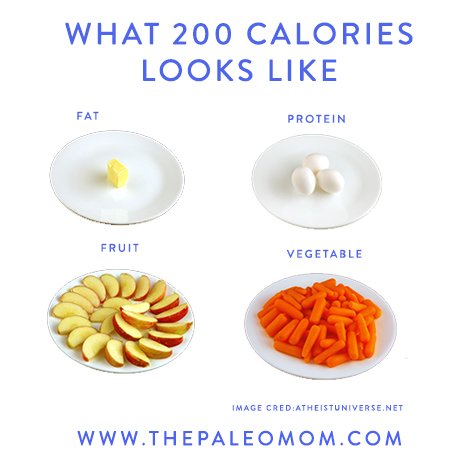
This image is property of www.thepaleomom.com.
Strategies for Successful Portion Control
While portion control is a simple concept, implementing it successfully may require some strategies and techniques. Let’s explore some practical tips for integrating portion control into your lifestyle.
Reading Food Labels
Food labels provide valuable information about serving sizes and nutritional content. By reading food labels, you can become more aware of portion sizes and make informed decisions. Pay attention to the serving size listed on the label and compare it to the amount you typically consume. This can help you adjust your portions and make healthier choices.
Portion Control when Dining Out
Dining out can present challenges when it comes to portion control, as restaurant servings are often larger than what we need. To navigate this situation, consider splitting a meal with a dining companion or requesting a takeout box to portion out half of the meal before starting to eat. You can also choose healthier options from the menu, such as salads or grilled protein, and ask for dressings or sauces on the side.
Avoiding Trigger Foods
Identifying trigger foods that lead to overeating can be helpful in practicing portion control. These are foods that you find difficult to stop eating once you start or have a tendency to over-consume. By being aware of your trigger foods and either avoiding them altogether or portioning them out in advance, you can better manage your portions and prevent mindless eating.
Using Small Plates and Bowls
The size of your plate or bowl can influence your perception of portion sizes. Using smaller plates and bowls can trick your mind into feeling satisfied with smaller amounts of food. By visually filling your plate or bowl, you create the illusion of a larger portion without increasing your caloric intake.
Pre-Portioning Snacks
Snacking can be a downfall for portion control, as it is easy to mindlessly eat from a large bag or container. To avoid overeating, pre-portion snacks into individual servings. This can be done by dividing larger packages into smaller resealable bags or by purchasing pre-portioned snacks. Having portioned snacks readily available can help curb mindless munching and prevent excessive calorie intake.
Challenges and Solutions in Portion Control
While portion control is a valuable strategy for weight loss, it is not without its challenges. Let’s explore some common obstacles to portion control and practical solutions to overcome them.
Emotional Eating
Emotional eating, or eating in response to emotions rather than hunger, can make portion control difficult. During times of stress, sadness, or boredom, individuals may turn to food as a source of comfort or distraction. To overcome emotional eating, it is important to address the underlying emotions and develop alternative coping mechanisms, such as engaging in a hobby, talking to a friend, or practicing relaxation techniques.
Social Pressures
Social situations can present challenges to portion control, as the availability of food and peer influence can lead to overeating. To navigate social pressures, consider communicating your goals and intentions to friends and family so they can support you. Additionally, practice mindful eating and listen to your body’s hunger and fullness cues rather than feeling obligated to eat a certain amount due to social expectations.
Lack of Awareness
Lack of awareness regarding appropriate portion sizes can hinder effective portion control. Simply not knowing what a correct serving size looks like can lead to overeating. To combat this, educate yourself about serving sizes for different foods and practice measuring or visualizing portions until it becomes intuitive. Consulting with a registered dietitian or nutritionist can provide further guidance and support.
Planning and Preparation
Lack of planning and preparation can make portion control challenging. When you are unprepared, it is more likely that you will reach for readily available, conveniently packaged foods, which may not align with your portion control goals. To overcome this, dedicate time to meal planning and preparation, making it easier to have portioned meals and snacks on hand. This can include shopping for healthy ingredients, meal prepping, and having healthy snacks readily available.
Seeking Professional Guidance
If you find yourself struggling with portion control or have specific dietary needs, seeking professional guidance can be beneficial. Registered dietitians or nutritionists can provide personalized advice, create tailored meal plans, and help you navigate portion control to achieve your weight loss goals. They have the knowledge and expertise to address any challenges you may be facing and help you develop a sustainable, individualized approach.
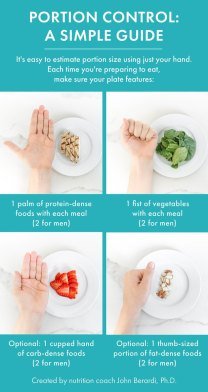
This image is property of i0.wp.com.
Tips and Techniques to Enhance Portion Control
In addition to the strategies mentioned earlier, here are some additional tips and techniques to enhance your portion control efforts:
Eating Slowly and Mindfully
Eating slowly and mindfully allows you to savor each bite and be more conscious of your portion sizes. It takes about 20 minutes for your brain to receive signals of fullness, so by eating slowly, you can better gauge when you are satisfied and avoid overeating.
Drinking Plenty of Water
Drinking an adequate amount of water throughout the day can help control portion sizes. Sometimes, thirst can be mistaken for hunger, leading to unnecessary snacking or overeating. By staying hydrated, you can distinguish between true hunger and thirst and make more mindful choices.
Avoiding Distractions
Eating while distracted, such as watching television or working on your computer, can lead to mindless eating and overconsumption. To enhance portion control, focus on your meal or snack, eliminating distractions and allowing yourself to fully enjoy the eating experience.
Practicing Portion Control at Parties
Social gatherings and parties often involve large amounts of food, making portion control a challenge. To navigate these situations, consider using a smaller plate, sampling a variety of dishes in smaller portions, and prioritizing healthier options. Remember that it’s okay to enjoy yourself in moderation and prioritize the company and overall experience rather than solely focusing on the food.
Savoring Small Treats
While portion control is important for weight loss, it’s also essential to enjoy the occasional treat. Instead of depriving yourself completely, practice portion control with indulgent foods. Allow yourself a small portion of your favorite treat and savor each bite, fully enjoying the flavors and textures.
Monitoring and Tracking Portion Sizes
Monitoring and tracking your portion sizes can be a useful tool for maintaining weight loss and staying on track with your goals. Here are some methods to help you monitor and track your portion sizes effectively.
Keeping a Food Journal
Keeping a food journal or using a food tracking app can help you become more aware of your portion sizes and overall food intake. By recording what you eat and the corresponding portion sizes, you can identify patterns, track your progress, and make adjustments as needed.
Using Portion Control Apps
There are various portion control apps available that can assist you in monitoring and tracking your portion sizes. These apps often include a database of common foods and their corresponding portion sizes, making it easier for you to make informed choices. They can also provide valuable insights into your daily caloric intake and help you stay accountable.
Measuring Progress and Adjusting Portions
Regularly measuring your progress and adjusting your portions as needed is crucial for long-term success. Keep track of your weight, body measurements, and how your clothes fit to gauge your progress. If you find that you are not achieving your desired results, reassess your portion sizes and make adjustments accordingly.
The Role of Technology
Technology has made it easier than ever to practice portion control. From food tracking apps to nutrition calculators, there are numerous tools available to help you monitor and track your portion sizes. Embrace the convenience and power of technology to make portion control a seamless part of your daily routine.
Benefiting from Support Systems
Having a support system can greatly enhance your portion control efforts. Whether it’s a workout buddy, a friend with similar health goals, or an online community, having individuals to share your journey with can provide motivation, accountability, and a sense of camaraderie. Share your struggles, celebrate your victories, and learn from others as you all work towards practicing portion control.
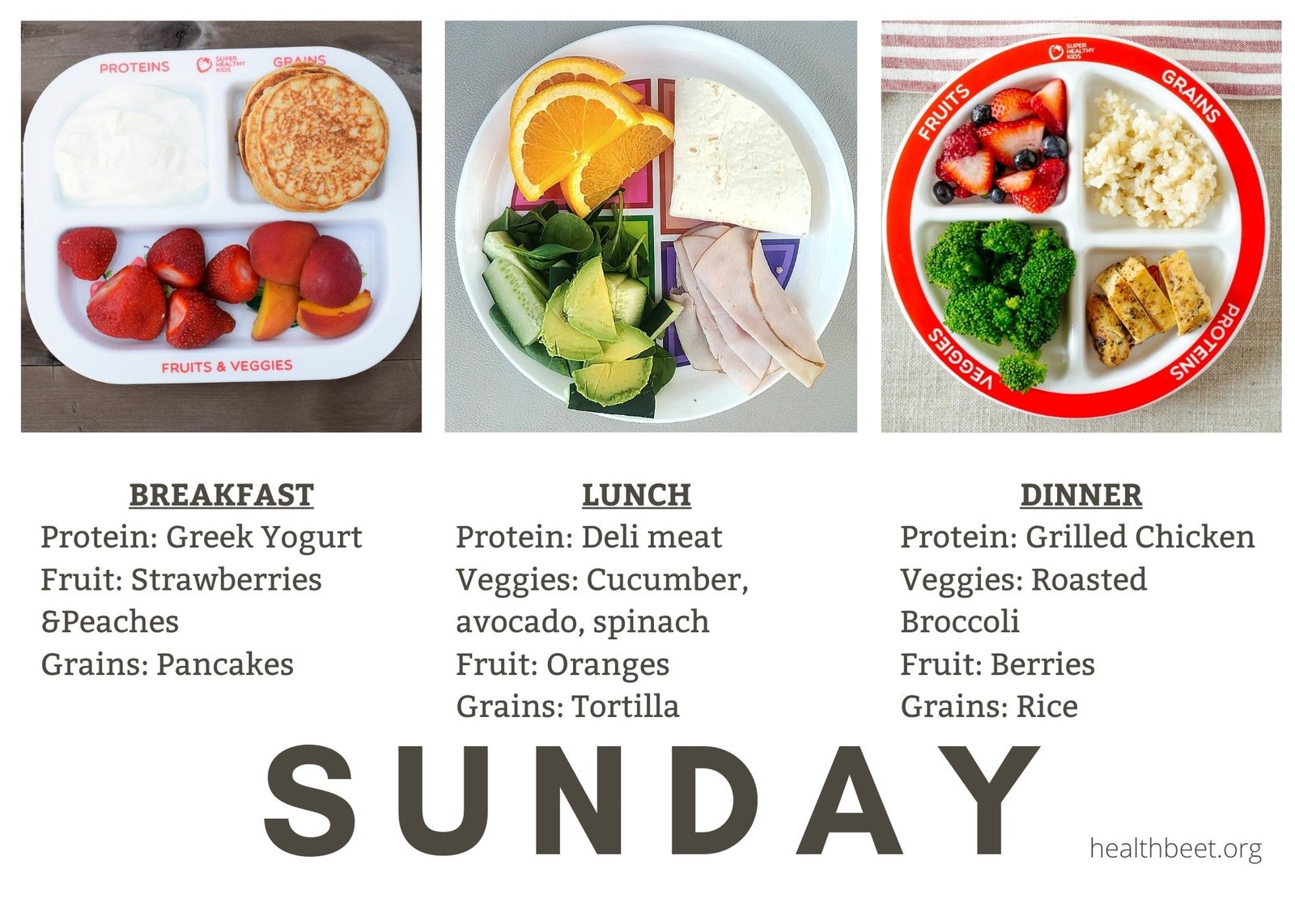
This image is property of healthbeet.org.
Combining Portion Control with Exercise
While portion control plays a significant role in weight loss, it is important to combine it with regular physical activity for optimal results. Here’s how portion control and exercise can work together to help you achieve your goals.
Balancing Caloric Intake and Expenditure
Achieving weight loss requires creating a calorie deficit, which can be achieved through a combination of reduced caloric intake and increased physical activity. By practicing portion control and regulating your caloric intake, you can ensure that you are providing your body with the fuel it needs without exceeding your energy requirements.
Fueling Workouts with Proper Portions
Before and after exercise, it is important to fuel your body with appropriate portions of nutrients to optimize performance and recovery. Consuming a balanced meal or snack that includes carbohydrates for energy and protein for muscle repair can support your exercise routine while still managing your portion sizes.
Portion Control for Post-Workout Recovery
After a workout, it is common to feel hungry and crave larger portions. However, it is essential to practice portion control even during post-workout meals or snacks. Focus on providing your body with the necessary nutrients without overconsumption. Remember that suitable portion sizes can still meet your nutritional needs and aid in recovery.
Maintaining Weight Loss through Exercise
Once you have achieved your weight loss goals, regular exercise plays a crucial role in maintaining your progress. By incorporating physical activity into your routine, you can continue to burn calories, build lean muscle mass, and boost your metabolism. Portion control combined with exercise creates a sustainable lifestyle that promotes overall health and weight maintenance.
Creating a Sustainable Routine
Ultimately, the combination of portion control and exercise is about creating a sustainable routine that fits into your lifestyle. It is important to find physical activities you enjoy and develop a portion control strategy that works for you. By making gradual changes, staying consistent, and prioritizing your health, you can achieve long-term success.
Conclusion
Understanding the link between portion control and weight loss is essential for anyone looking to achieve and maintain a healthy weight. By practicing portion control, you can make informed choices about the amount of food you consume, create a calorie deficit, and foster a healthier relationship with eating. Through strategies such as using food measuring tools, visual portion control, and mindful eating, you can take control of your portion sizes and make sustainable changes that support your weight loss goals. Remember, portion control is not about deprivation or strict rules, but rather about finding balance and nourishing your body with appropriate amounts of food. So start implementing portion control today and embrace a healthier, more mindful way of eating for long-term success.
